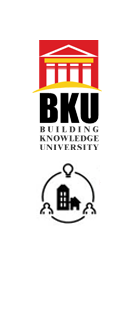Commercial Envelope Physics: Sections 1 & 2
This Commercial course gives Specialists more detail and a better understanding of envelope systems. In particular, this material focuses on wall assemblies and on how walls function as a system. This course will give Specialists insights as to how architects and others on the design team describe and categorize wall systems and components, and how those components fit together and perform within the wall assembly.
In addition, course participants will learn about various water management strategies and the role that water resistant barriers play in how those strategies are implemented. The course will also look at air barriers and water (weather resistant) barriers to determine where they belong in a commercial wall assembly.
Course Structure
We've divided this course on Envelope Systems into two sections. While each section has its own separate online exam, there is only one proctored exam covering all 11 lessons.
Section 1 provides an overview, and for some, a review of air, water and wall basics:
- Lesson 1 provides an overview of the course.
- Lesson 2 talks about what walls are.
- Lesson 3 describes what walls do.
- Lesson 4 revisits some basic principles of air, water and walls; these principles were covered in an earlier Building Knowledge University course on Building Envelope Physics.
- Lesson 5 introduces air and water barriers.
- Lesson 6 covers glazing.
- Lesson 7 describes the features and functionalities of concrete systems, including poured-in-place, tilt-up and pre-cast systems.
- Lesson 8 provides information about masonry (including brick and concrete masonry unit) and stone veneer systems.
- Lesson 9 features siding products, including wood, fiber cement, metal, and vinyl siding.
- Lesson 10 discusses stucco and EIFS (Exterior Insulation Finish System) exterior wall assemblies.
- Lesson 11 explores the complicated issues surrounding component and system interfaces and detailing.
- Lesson 12 details fire and flammability standards and design considerations.

